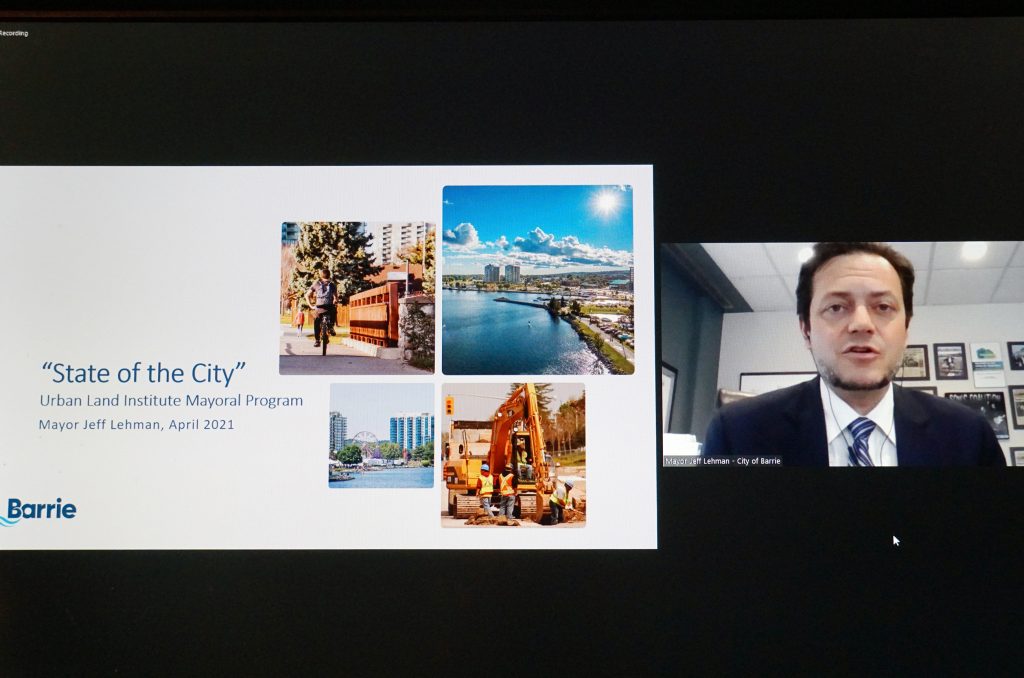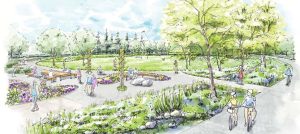A year ago Barrie, Ont. Mayor Jeff Lehman was dubious about the provincial government’s projections that his city’s population would double to 300,000 residents by 2051.
“I would have said that was an aggressive number,” he stated.
But the pandemic has given him pause for thought about that rapid growth.
The location of work is “decoupling for people in certain industries,” making cities like Barrie increasingly attractive to work from home, Lehman told a webinar audience on the Changing Face and Space of Barrie, presented by the Urban Land Institute.
Barrie’s mayor for the last decade, Lehman said the days of urban sprawl are well behind the city which has been focused on urban intensification for about a decade as it grapples with growing pains that now leave it with a shortage of housing types for a shifting demographic.
Of the 14 developments in the works in downtown Barrie, there are more than 3,000 residential units and 2.5 million square feet of commercial space.
The tallest project is 41 storeys, “a dramatic change in built form” for the city set on Lake Simcoe where two 16-floor residences have dominated the skyline for years, he said.
Calling the development influx “transformative,” Lehman told the webinar that to accommodate the pace of growth Barrie needs a broad spectrum of residential supply, including different affordable housing types. Townhouses, midrise and highrise apartments, supportive and social housing are examples.
He said the city is seeing an increase in residential development near GO Transit stations and along arterial roads in the form of townhouses and midrise apartments, the latter being coined as the “missing middle.”
The federal and provincial governments need to invest in housing for homeless in Barrie, like they have done in bigger cities such as Toronto. The need is especially for supportive housing, “the best response to chronic homelessness,” he added.
Michelle Banfield, a registered professional planner and director of development services for Barrie, told the webinar that one example of the city’s affordable housing strategy is allowing developers to build second suites into new housing to help meet affordable needs.
Barrie is open to ideas on affordable housing options, she told the webinar.
“Definitely we can’t do it on our own.”
Lehman agrees. He invited developers to come to the city to “help us be part of creating a broader range of housing choices for people.”
He told the audience that Barrie’s housing rentals have crept up over the pandemic and are now only about $100 less a month than the city of Toronto’s.
“For a city of our size, our rents are way out of whack.”
Meanwhile, downtown Barrie is drawing more commercial investment which historically had set up shop in the suburbs.
Lehman attributes the shift largely to the vitality of the core where nearly 40 restaurants and bars offer outdoor patio service.
“Public spaces (patios for example) are one of your best economic development tools,” he pointed out, noting the city’s decision to allow outdoor patios a decade ago was considered “controversial” at the time.
Among the growing pains for Barrie is how to support a growing, ethnically diverse population.
Michele Newton, president and co-founder of Making Change, said while communities like Barrie are getting more diverse, “we’re still on that path to inclusion.”
While Barrie grew “incredibly quickly” from a small town in the 1980s, it didn’t start diversifying its built form or its population until recently, Lehman said.











Recent Comments
comments for this post are closed